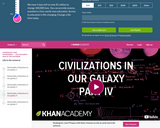
Taking a shot at estimating the number of detectable civilizations. Created by Sal Khan.
- Subject:
- Astronomy
- Physical Science
- Material Type:
- Lesson
- Provider:
- Khan Academy
- Provider Set:
- Khan Academy
- Author:
- Sal Khan
- Date Added:
- 05/20/2011

Taking a shot at estimating the number of detectable civilizations. Created by Sal Khan.
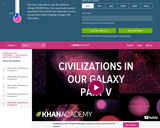
More reasons why we haven't detected anything yet. Created by Sal Khan.

Students learn about ultraviolet light in this Moveable Museum unit, where they detect UV rays and then explore ways to block them. The four-page PDF guide includes suggested general background readings for educators, activity notes, step-by-step directions, and information about where to obtain supplies. Students make a bracelet from beads that respond to UV light by changing color, and test it in different light environments.
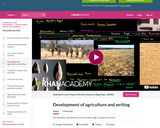
The Paleolithic and Neolithic eras of the Stone Age. Created by Sal Khan.

This is an activity about creating impacts on sandy surfaces. Learners will use trays of sand and a variety of solid objects to model the effects of "impactors" on the surface. This is activity 6 of 9 in Mars and Earth: Science Learning Activities for After School.

Learners will use trays of sand and cups of water to recreate surface features seen in images of Mars. This is activity 5 of 9 in Mars and Earth: Science Learning Activities for After School.

This is an activity about modeling the effect of wind on a sandy surface. Learners will use trays of sand and straws to recreate surface features of images of Mars. Participants test their ideas about how some of the features on Mars might have been produced. This is activity 4 of 9 in Mars and Earth: Science Learning Activities for After School.
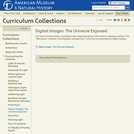
For most of human history, recording a star meant describing it with words or drawing a picture. The 19th-century invention of photography changed that—only to be revolutionized by digital imaging. This Moveable Museum article, available as a six-page printable PDF file, takes a look at the technology of digital imaging. It discusses how digital images are pictures stored as numbers and explains how computer manipulation can enhance images and reduce distortion. Some suggested resources are provided for further research.
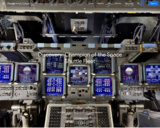
Flying more missions than any other shuttle, Discovery carried out every type of mission NASA had to offer, spending a total of 365 days in space, and checking off many firsts in spaceflight.
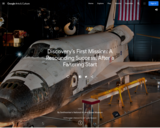
Over 30 years ago, Discovery ascended into space for the first time, after three thwarted launch attempts. Originally scheduled to lift off in June 1984, Discovery finally launched on August 30.
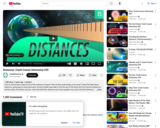
How do astronomers make sense of the vastness of space? How do they study things so far away? Today Phil talks about distances, going back to early astronomy. Ancient Greeks were able to find the size of the Earth and from that the distance to and the sizes of the Moon and Sun. Once the Earth/Sun distance was found, parallax was used to find the distance to nearby stars, and that was bootstrapped using brightness to determine the distances to much farther stars.
Chapters:
Introduction
How did we calculate the Earth's Size?
THE Astronomical Unit (AU) = 149,597,870.7 km
Depth Perception & Parallax
Light Years & Parsecs
Brightness Indicates Distance
Review

This OER explores Diurnal Motion by using a Celestial Globe. It contains both an activity as well as resources for further exploration. It is a product of the OU Academy of the Lynx, developed in conjunction with the Galileo's World Exhibition at the University of Oklahoma.

In this experiment, students explore the diffraction of light into different wavelengths (colors) by using a diffraction grating and shoe box to create and measure a visible spectrum. The concepts of diffraction, electromagnetic waves, wavelength, and the electromagnetic spectrum are introduced. The activity also includes a discussion of red shift, blue shift, and the Doppler effect. Information about solar radiation and the roles of stratospheric and tropospheric ozone is included.

Based only on what we see when we watch stars in the sky, it’s easy to believe that the stars revolve around a stationary Earth, a common misconception among children. Although many students have at least heard that the Earth spins, they may not have thought about how this affects how we see stars, planets and the Moon.
In this activity, students find evidence of the Earth’s spinning through observing the apparent movement of stars. They use outstretched arms to measure the distance between a star and an object at the horizon. Later, they return to the same spot, re-measure, and notice that the star is in a different position, and try to explain this movement. Finally, the instructor shares the accepted scientific explanation for the phenomenon.
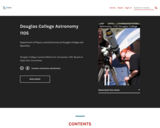
Douglas College Custom Edition for Astronomy 1105. Based on Open Stax Astronomy.

Short Description:
Douglas College Custom Edition for Astronomy 1105. Based on Open Stax Astronomy.
Word Count: 437950
(Note: This resource's metadata has been created automatically as part of a bulk import process by reformatting and/or combining the information that the author initially provided. As a result, there may be errors in formatting.)
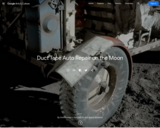
When most people think of emergency fixes in space, the first incident that comes to mind is the famous Apollo 13 mission.
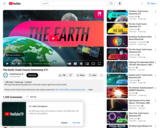
Phil starts the planet-by-planet tour of the solar system right here at home, Earth.
Chapters:
Introduction: The Earth
Layers of Earth
Continental Plates
Why is the Earth's Core so Hot?
Earth's Magnetic Field
Earth's Atmosphere
Atmospheric Pressure
Liquid Water on Earth
The Greenhouse Effect: CO2 in the Atmosphere
Review

In this activity, students play the roles of "time travel agents" creating an advertisement for a geologic time period which has been assigned to them. They will use the Earth Science Reference Tables (available on the internet) to learn some basic facts about their assigned period. A rubric for assessing student understanding is provided.
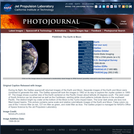
Photo of the Earth & Moon created from images from the the Galileo spacecraft.